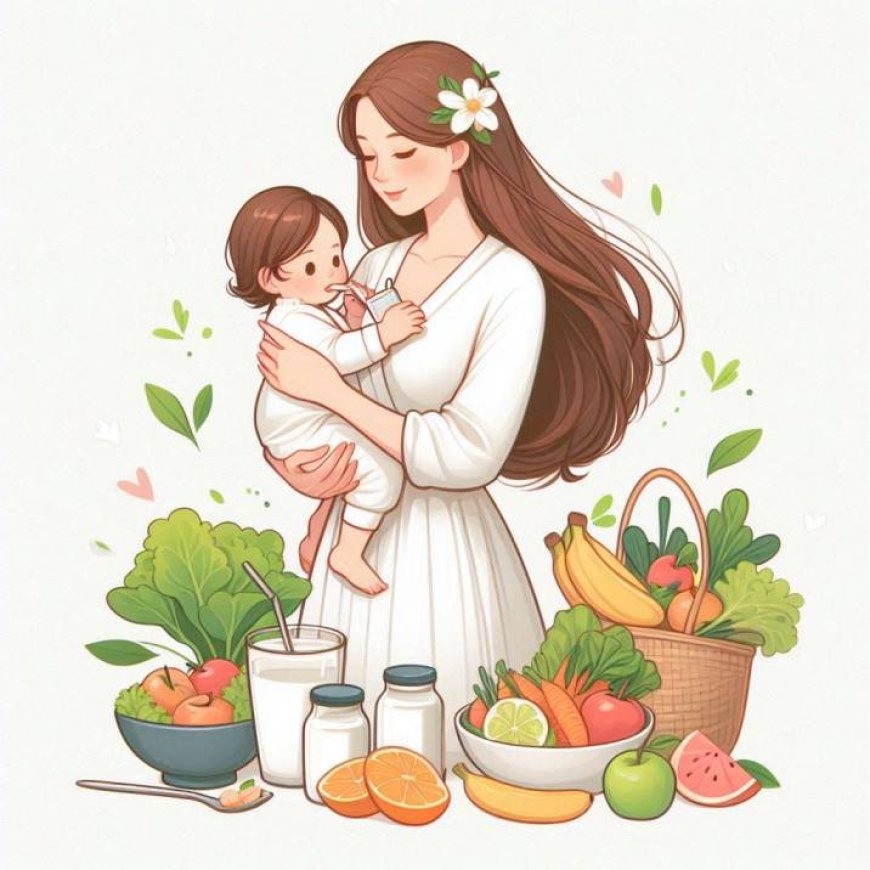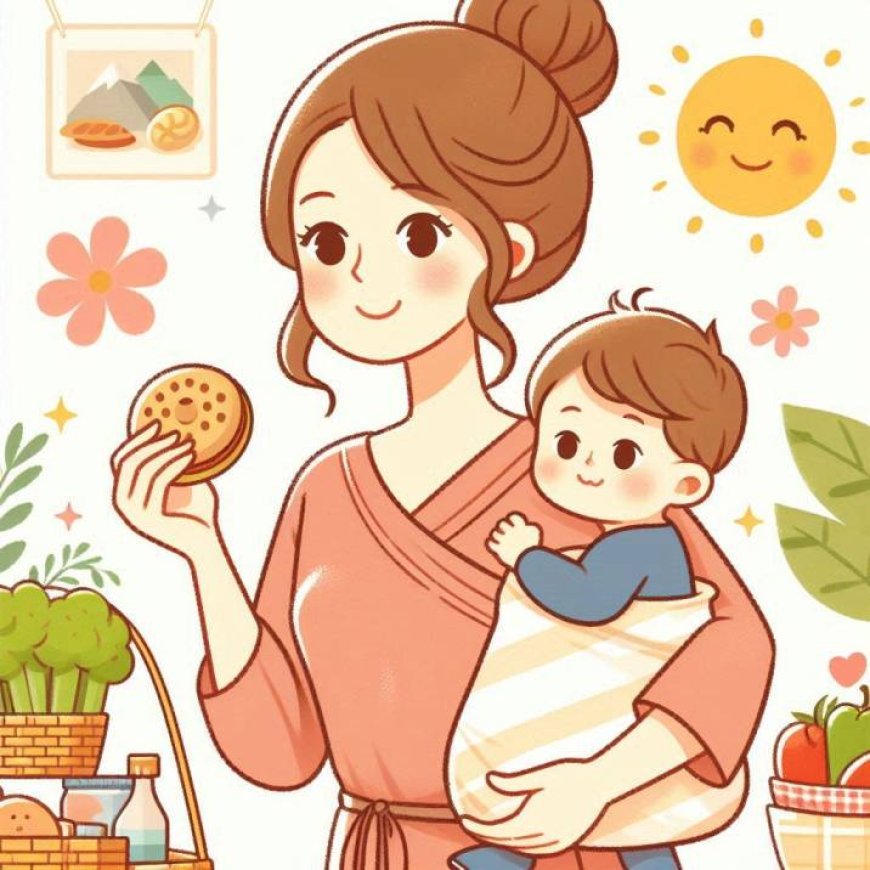Foods You Should Never Give to Kids Under 10 (And Healthy Alternatives)
Find out which foods to avoid for kids under 10 and discover safe, healthy alternatives for better nutrition.
When it comes to feeding children under 10, it's very important to choose foods that are not only nutritious but also safe to keep children healthy and safe for long term. Some foods can pose choking hazards, trigger allergies, or contain harmful ingredients that are not suitable for young kids. In this article, we’ll explore common foods you should avoid giving to kids under 10 and suggest healthier alternatives to help your children grow strong and healthy.
Foods That Can Cause Choking in Kids
Whole Nuts
Whole nuts, especially peanuts, can be a choking hazard for children under 5. Even older kids can struggle with the hard texture. Safer option: Try spreading peanut butter thinly or offering ground nuts for younger children.
Hard Candies and Gum
Hard candies and chewing gum are common choking hazards. Kids often don’t have the awareness to chew slowly or carefully. Safer option: Opt for soft fruit snacks or gummy vitamins instead.
Foods with High Allergy Potential
Honey
Honey can cause botulism in babies and young children due to bacteria that their developing immune systems can’t handle. It’s best to avoid honey until after the age of one. Safer option: Use maple syrup or mashed fruit as a natural sweetener.
Shellfish
Shellfish, such as shrimp and crab, are high-risk allergens, especially for young children. Always consult a doctor before introducing shellfish to kids. Safer option: Offer fish like salmon or cod, which are less likely to cause an allergic reaction.
Peanuts and Peanut Butter
Peanut allergies can be serious, and peanut butter, if eaten in large dollops, can become a choking hazard. When introducing peanuts, always watch for any allergic reaction and avoid giving large clumps of peanut butter. Safer option: Serve peanut butter spread thinly or try other nut butters like almond butter in small amounts.
Foods High in Sugar and Artificial Sweeteners
Sugary Snacks and Sodas
Foods and drinks high in sugar, like candy and soda, can cause tooth decay and obesity. They provide little nutritional value. Healthier option: Encourage fruit as a natural sweet snack and water or milk instead of soda.
Foods with Artificial Sweeteners
Artificial sweeteners like aspartame are found in many diet sodas and sugar-free snacks. They may have long-term health impacts that are still being studied. Safer option: Offer foods sweetened with natural ingredients, like honey or fruits.
Foods High in Salt and Sodium
Processed Snacks and Chips
Chips and salty snacks contain high amounts of sodium, which can increase the risk of high blood pressure later in life. Healthier option: Try giving them unsalted crackers or air-popped popcorn.
Canned Soups and Frozen Meals
Pre-packaged meals are often loaded with sodium and preservatives. Healthier option: Prepare homemade soups and meals with fresh ingredients and less salt.
Foods Containing Caffeine
Caffeinated Sodas and Energy Drinks
Energy drinks and caffeinated sodas should be completely avoided for kids. Caffeine can interfere with their sleep and cause anxiety. Healthier option: Stick to water, milk, or 100% natural fruit juices.
Chocolate
Chocolate contains small amounts of caffeine, and eating too much can affect a child's sleep and mood. Healthier option: Give them dark chocolate with lower sugar in small amounts, or try fruit-based treats.
Foods High in Saturated Fats
Fast Foods
Burgers, fries, and other fast food are high in unhealthy fats and lack important nutrients. Mostly this can lead to weight problems in the children from an early age and also this might cause other health issues as they grow older. Healthier option: Prepare homemade versions of fast food using lean meats and baked fries.
Packaged Baked Goods
Donuts, cakes, and other processed baked goods often contain trans fats, which are harmful to growing children. Healthier option: Bake at home with healthier ingredients like whole grains and natural sweeteners.
Raw or Undercooked Foods
Raw Eggs
Raw eggs can carry harmful bacteria like salmonella, which can cause food poisoning in young kids. Safer option: Make sure eggs are fully cooked before serving them.
Undercooked Meat and Poultry
Undercooked meat and poultry carry risks of bacteria like E. coli or salmonella. Safer option: Always cook meat thoroughly before giving it to children.
Foods with Harmful Additives
Foods with Food Coloring and Preservatives
Many candies and processed snacks contain artificial colors and preservatives, which may lead to hyperactivity or other negative health effects in some children. Healthier option: Offer naturally colored snacks like fruits and veggies.
Highly Processed Meats (Hot Dogs, Sausages)
Processed meats often contain nitrates and high levels of sodium, which can be harmful in large amounts. Healthier option: Choose nitrate-free meats or lean cuts of fresh meat instead.
Large Pieces of Food or Tough Textures
Popcorn
Popcorn can easily get stuck in a child's throat, making it a dangerous snack for younger children. Safer option: Try puffed rice snacks or other soft, easy-to-eat options.
Tough or Chewy Meat
Children under 10 may find it hard to chew tough meats, increasing the risk of choking. Healthier option: Offer soft meats, such as well-cooked chicken or ground meat.
Foods with Potential Toxicity
Unpasteurized Dairy Products
Raw milk and cheese can carry harmful bacteria like E. coli and listeria. Always choose pasteurized dairy products for children. Safer option: Look for the pasteurized label on milk, yogurt, and cheese.
Certain Fish (High in Mercury)
Certain fish, like swordfish and king mackerel, are high in mercury, which can be harmful to children's development. Healthier option: Give them fish that are low in mercury, such as salmon or cod.
Healthy Foods to Give to Kids
While there are plenty of foods to avoid, there are many healthy options to give to children. Focus on natural, unprocessed foods that provide the right nutrition for growing kids. Some good options include:
-
Fruits and Vegetables: Fresh fruits and vegetables are packed with vitamins, minerals, fiber and other minerals that can support growth of children which also make sure their health also remains good as they grow. Fresh fruits and vegetables should be cut into small pieces and vegetables should be cooked by making sure bacterias are killed and make sure nutrients of vegetables do not disappear.
-
Whole Grains: Brown rice, oats, and whole wheat bread provide essential nutrients and fiber.
-
Lean Proteins: Chicken, turkey, eggs, and beans are good protein sources.
-
Dairy: Low-fat yogurt, cheese, and milk supply calcium for growing bones.
In summary, it’s important to carefully choose the foods we give to kids under 10. Avoid foods that are choking hazards, high in sugar, salt, or unhealthy fats, and be cautious of allergens. It’s always best to provide natural and organic foods as much as possible, ensuring they grow up healthy and strong. However, as they grow older, it becomes harder to avoid all processed foods, so teaching them about balanced nutrition is essential for their long-term health.
The world is full of junk, packed, and processed food, but offering organic and natural food while they are young can help set a strong foundation for a healthier future.
FAQs
-
Can I give my toddler whole grapes?
-
Whole grapes can be a choking hazard. Make sure you always cut them into small pieces before giving them to eat.
-
Is it safe to give kids under 10 peanut butter?
-
Yes, but spread it thinly to avoid choking and watch for any signs of peanut allergies.
-
What are healthy snack alternatives for kids?
-
Fresh fruit, yogurt, air-popped popcorn, and whole grain crackers are great options.
-
Can kids have caffeine?
-
No, caffeine in drinks like soda or coffee is not suitable for children. Opt for water, milk, or fruit juice.
-
When can kids start eating fish?
-
You can introduce low-mercury fish, like salmon, after consulting your pediatrician, usually around age 3.
What's Your Reaction?










































